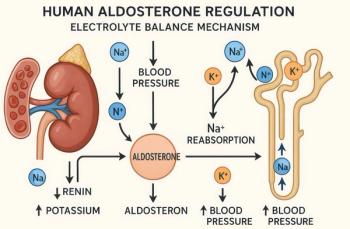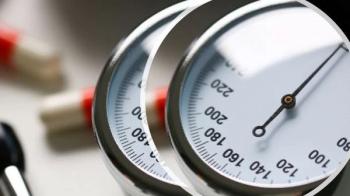
White Coat Hypertension: How Dangerous Is It?
Recent research suggests that white coat hypertension is more dangerous than previously thought, but education and lifestyle interventions may help.
Visiting a doctor can be stressful and, for some patients, the experience is so stressful that their blood pressure (BP) spikes at the mere sight of a medical professional. Patients who have normal BP readings at home but have apparent hypertension when in their doctors’ offices are said to have white coat hypertension (WCH).
White coat hypertension was first mentioned in the literature in 1896 by Scipione Riva-Rocci, better known as the inventor of the modern sphygmomanometer.1 The term itself was coined in the next century by Thomas Pickering.2 Diagnostic criteria for hypertension vary, but it is likely that anywhere from 30% to 40% of patients experience WCH.2
Historically, the condition itself has been considered benign. The risk was from overmedicating patients who, though presenting with elevated BP in the office, did not have elevated readings when not in the clinic and could therefore be harmed by aggressive treatment.
Recent studies, however, suggest that the syndrome itself might not be as benign as previously thought.
Not always benign
A 2018 study published in
The study was the largest to date -approximately 60 000 people-of clinic vs ambulatory BP monitoring, but it was not without flaws.
“We need to be cautious about the interpretation,” Eugene Yang, MD, clinical professor of medicine at the University of Washington School of Medicine, Seattle, told
The cohort was large, but limited to a white population only living in Spain. Also, the clinic BP readings only reflected the average of 2 readings per visit.
Because of these possible limitations, researchers at the University of Pennsylvania recently conducted a meta-analysis of research on clinic vs ambulatory BP monitoring, published in June 2019 in
“Some thought the Spanish study may have been an anomaly, so we wanted to look across at all studies. When we excluded that study, the results help clarify things,” first author Jordana Cohen, MD, MSCE, assistant professor of medicine and epidemiology, University of Pennsylvania Perelman School of Medicine, Philadelphia, told Patient Care® Online.
This study suggests that people with WCH who are not already being treated for hypertension are more likely to develop sustained hypertension down the road.
However, “There’s no evidence that putting them on medications at this stage reduces risk,” Cohen stated. “The cornerstone of this study is the importance of getting readings outside of clinic. Anyone who has high BP in the clinic should be doing home monitoring.”
Education and lifestyle
Twenty-four-hour ambulatory monitoring is undoubtedly the best way to get accurate readings, but it is not as easy to accomplish as it sounds.
“Twenty-four-hour monitoring is a challenge because the devices are expensive and there are restrictions on reimbursement,” Yang said.
New Medicare guidelines that expand coverage for remote monitoring will help, but that still does not cover the cost of initially purchasing the equipment, which makes it unfeasible for many practices.
“For most physicians, the tendency is to use home monitoring devices. But you can get pseudo-hypertension with these, too, if the device is not being used properly or if the cuff is the wrong size, or if the device is malfunctioning,” Yang said.
Yang recommends having patients come in for an educational visit with a nurse to learn how to properly take BP readings, including being instructed on the importance of sitting quietly for a few minutes, feet on the floor, and arms resting on a table at roughly heart level.
Yang also offers some advice for getting more accurate readings in the clinic: “A simple thing is if BP is high at the beginning of the visit, take it again at the end. It’s frequently lower-possibly as much as 8 points lower-after the patient has had time to acclimate to the visit,” he said.
As far as treatment is concerned, lifestyle intervention should be the first option for patients with WCH. Early lifestyle intervention may be the best way to prevent WCH from developing into sustained hypertension.
“WCH patients with high risk factors (obesity, diabetes, existing heart disease) are more likely to have negative outcomes,” Cohen said. “They would benefit most from lifestyle interventions.”
Stay in touch with Patient Care® Online:
- Subscribe to our
Newsletter
- Like us on
Facebook
- Follow us on
Twitter
- Write or Blog for
Patient Care® Online
References:
1. Cobos B, Haskard-Zolnierek K, Howard K.
2. Franklin SS, Thijs L, Hansen TW, O'Brien E, Staessen JA.
3. Banegas JR, Ruilope LM, de la Sierra A, et al.
4. Cohen JB, Lotito MJ, Trivedi UK, et al.
Newsletter
Enhance your clinical practice with the Patient Care newsletter, offering the latest evidence-based guidelines, diagnostic insights, and treatment strategies for primary care physicians.


















































































































































































































































































